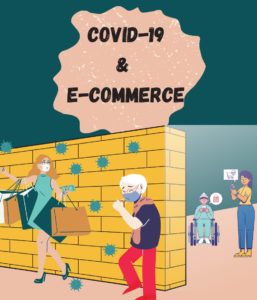We all expected to see the end of COVID-19 by now but it has evolved into a more deadly virus. As the time passes we have learnt to live with it. Controlled shutdowns and different planned safety parameters somehow controlled this deadly virus but it still persists.
Like all other business, E-Commerce has suffered too. Even though we have seen an increase in trend of online sale but there has been many problems that contributed to the loss in this industry as well.
First and foremost is the ability of almost all manufacturers to manufacture different products. As the COVID spread, the governments were forced to shut down normal routine of life and thus the people were left either without job or working partially of what they used to. The loss of manpower in factories caused the production rate to drop drastically. Coupled with high demand online the manufacturers started to run of products for long period of times.
One more problem faced was the unavailability of transportation. With COVID there were different restrictions placed on the general public among which was also to limit the movement of people from one place to another. Shipments were late as well as put on hold for upto 2 weeks in order to follow COVID safety protocol. This caused delay in restocking as well as normal deliveries to customers.
Late deliveries to customers, who were already agitated by COVID restrictions, was another factor that dealt great loss to E-Commerce. Negative feedbacks contributed to the seller performance history which in turn disturbed their ranking. Moreover, people were not happy with late delivery and in turn most opted not to buy from the same seller again. This in turn affected seller trusted customers which were acquired over some time.
COVID changed how people think. Different generations have different reactions to the effects of COVID. One survey of U.S. and U.K. consumers found that 96% of Millenials and Gen Z are concerned about the pandemic and its effects on the economy. This concern is leading them to change their behavior more dramatically than other generations, which includes cutting back on spending, stocking up on items, and spending less on experiences. Although still concerned about coronavirus and its effects on the economy, older generations are slightly less concerned than younger generations and letting it impact their shopping habits less. For example, 24% of Boomers and 34% of Gen X said they were letting current events impact what items they purchase, compared to nearly half of Millennials.
While data shows that shopping behaviors are changing based on generational differences, we’re also seeing variations based on gender.
While survey data shows that women are more likely to be concerned about the effects of COVID-19, it also shows that men are more likely to have it impact their shopping behaviors. One-third of men, compared to 25% of women, reported the pandemic affecting how much they spend on products. Additionally, 36% of men, compared to 28% of women, reported it affecting how much they are spending on experiences (travel, restaurants, entertainment, etc.).
Men were also found to be shopping online and avoiding in-store experiences more than women. This includes taking advantage of options that limit in-store interactions like BOPIS (buy online, pick-up in store), curbside pickup, and subscription services.

As people have embraced social distancing as a way to slow the spread of the pandemic, there has naturally been a drop-off in brick-and-mortar shopping. That would seem to mean there would likely be an increase in online shopping as people turn to ecommerce to purchase the items they might have otherwise purchased in person.
Has that prediction won out? In reality, ecommerce sales are not higher across the board, although some industries are seeing significant upticks. This is especially true for online sellers of household goods and groceries. JD.com, China’s largest online retailer, has seen sales of common household staples quadruple over the same period last year. A survey by Engine found that people are spending on average 10-30% more online.